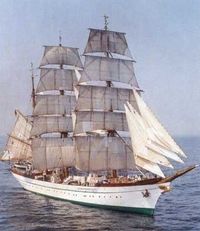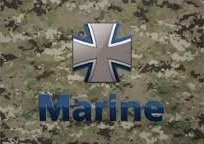- Inuvik - Reindeer Station - Tuktoyaktuk - Inuvik
Inuvik, (place of man), was conceived in 1953 as a replacement administrative center for the hamlet of Aklavik on the west of the Mackenzie Delta, as the latter was prone to flooding and had no room for expansion.Inuvik, the largest Canadian community north of the Arctic Circle and the regional government center for the Mackenzie Delta area, was planned by the federal government. The site was selected to replace Aklavik, and a hospital, school and airport were built over a period of six years, from 1955 to 1961. Both Gwich'in and Inuvialuit families moved to the new community, located on a navigable channel of the Mackenzie Delta.
Oil and natural gas were discovered nearby in the early 1970s, and following extensive exploration, world class discoveries were identified. The Aboriginal Pipeline Group, which includes the Gwich'in, is a partner in a proposal to build the first pipeline along the Mackenzie Valley to deliver gas from the Arctic to southern Canada and the US.
As the center for resource exploration and government, Inuvik expands with development of Canada's Arctic oil and gas reserves. The town has a population of close to 4000, with about 15 per cent claiming Gwich'in ancestry. The Gwich'in of Inuvik call themselves the Nihtat Gwich'in ("mixed people") because the community is made up of a mixture of different Gwich'in peoples.
One distinct feature of Inuvik are the "utilidors" -- above-ground utility conduits carrying water and sewer -- which are covered by corrugated steel. They run throughout town connecting most buildings, and as a result there are many small bridges and underpasses. Permafrost disallows the burying of such pipes in the ground.
It's getting really cold...
Reindeer Station was established by the Canadian Government in the early 1930's to manage the reindeer which had survived a five-year trek from Alaska to the east bank of the Mackenzie River Delta. The reindeer were kept in a 6,600 sq. mile grazing reserve east of the Delta. There used to be a Hudson's Bay Company trading post at Reindeer Station, and the Pelican Rapids, a HBC freighter, used to stop here. Gwichya Gwich’in elder Nap Norbert, who was a deckhand on this boat, said that they used to dread stopping here because of the large number of mosquitoes and the steep ramp up which they had to haul tons of equipment and supplies such as 45 gallon barrels. Several buildings can still be seen .
Orca at Tuktoyaktuk
Tuktoyaktuk, formerly known as Port Brabant, the community was renamed in 1950 as part of a trend of changing community names to those used by Native people. Located on the shores of the Arctic Ocean, at the uppermost edge of Canada, Tuktoyaktuk, or just Tuk as it is more commonly known, is a small Inuvialuit community. Local languages are Inuvialuktun and English.
Tuktoyaktuk is the anglicized form of the native Invialuit place-name meaning "resembling a caribou." According to legend, a woman looked on as caribou waded into the water and became petrified. Today, reefs resembling these petrified caribou are said to be visible at low tide....
Our Lady of Lourdes was built in Oakland, CA, in 1930. It acted as a supply ship, a Roman Catholic mission ship, and as a means of transportation for the children of Tuktoyaktuk to residential Catholic schools for 37 years, under the command of Rev. A. Biname, Rev. J. France and Billy Thrasher, Mona Thrasher's father. The ship now stands as an historical landmark on the side of the road in Tuk.
Tuktoyaktuk is located at 69° 26' 20" North and 133° 01' 45" West. It is set on Kugmallit Bay, near the Mackenzie River Delta, and is located on the arctic tree line.
We had the honor to film a Drum Dance !
Eskimo songs are sung with voices and circular drums. These drums can be made with wood, ivory, antler, a sea mammal's stomach or bladder, parachute material, or non-rip nylon. Iñupiaq and Yup’ik Eskimo songs and dancers are similar, but have their differences.Iñupiaq Eskimo songs are usually consisted of two or three parts, usually song together. The first part is sung with a soft drum beat. The second part is sung same as the first, but with a harder drum beat. The third (if any), is the same as the second, but with no voices sung, just the drum beat.
Inuit live throughout the Canadian Arctic: in Nunavut, the territory whose name means "the land of the Inuit"; in Nunavik, the northern third of Quebec; in Nunatsiavut, the coastal region of Labrador; in various parts of the Northwest Territories; and formerly in Yukon. Alaskan Inupiat live on the North Slope of Alaska and the Seward Peninsula.
The term Eskimo is considered pejorative in Canada, where the preferred term is Inuit, which means "people" or "the people" in most Inuit languages. In the Eastern Arctic of Canada, the language is often called Inuktitut and in the Western Arctic it is called Inuvialuktun, though other local designations, such as Inuinnaqtun, may be used.
The Inuvialuit are western Canadian Inuit who remained in the Northwest Territories when Nunavut split off. They live primarily in the Mackenzie River delta, on Banks Island, and in parts of Victoria Island in the Northwest Territories.
The settlement of land claims in the Northwest Territories, Nunavut and Northern Quebec has given the Inuit money and a framework to develop and expand economic development activities. New emerging businesses include real estate, tourism, airlines and offshore fisheries
The highlight of our tour is the community freezer. We descend a 27-step ladder to a tunnel in the permantly frozen ground, the permafrost. As our Cameralight illuminates the ceiling and walls, big ice crystals sparkle like thousands of diamonds
10 meters down into the perma frost
Big ice crystals sparkle like thousands of diamonds
Want some seal meat?
Many locals still hunt, fish, and trap. Locals rely on caribou in the fall, ducks and geese in the spring and fall, and fishing year-round.
The biggest landmark in the town (population 900) is the Distant Early Warning station just across the bay from the town! We are now closer to Siberia than we are to Edmonton...
The DEW Line or "Distant Early Warning Line", was a system of radars that were spread across the Arctic portion of Canada. These were used to detect missiles and Soviet bombers, however, when intercontinental ballistic missiles became the main delivery system for nuclear weapons, these radars became outdated. Since the end of the Cold War in 1990, these stations are rarely used for any significant purpose" .
Lots of camouflaged bones on the beach...
The Official End of my 2007 Expedition. I have a strange feeling. On one hand I am glad, on the other I am sad....
It was really time to get ORCA back to Inuvik! Ice is forming in the Delta....
Good by to ORCA. A barge company bought our trusty boat. For me it is like loosing a good old friend.
I still miss my ORCA in 2025...
At least ORCA will have many great adventures in the north....
Inuvik's Our Lady of Victory Roman Catholic Church, often called Igloo Church, is a famous landmark in the region. It is the most-photographed building in the town.
We participate in the early morning mass in the church. At least for me it was saying thank's for a safe journey...
Some thought's at the End of my 2007 Expedition...
What is real life for me?
It is....
- To follow a dream.
- (even when everybody think's you are crazy...)
- To take chances( good and bad ones...)
- To learn. (YOU NEVER LEARN ENOUGH !)
- To really know myself. ( even the bad part's...)
- To know and appreciate the important things in life...
- Life is an adventure of constant discovery.
- Throughout life, the most difficult thing a person must do is to attain a balance between meeting spiritual and material needs.
- ( which is damn hard...)
I think the World up here itself is a miracle
A world where you can be alone when you need solitude. Where everyone is a friend. Canada and Alaska is a vast and beautiful country. Most of us now live in urban centres and busy lives and rarely take the time to think beyond the hustle and bustle of civilisation. There is a whole new experience out there in Canada and Alaska for those who seek it. Go North. Little is known about the Yukon and the Northwest Territories. This sparsely populated landmass makes up almost half of North America. The land is still open to exploration. Take risks. Go exploring. Your soul is out there waiting for another great adventure.
On my expeditions, I often ask myself, "What is "civilized" about civilization?
I learned:
1. Indecision is the key to flexibility.
2. There is absolutely no substitute for a real lack of preparation.
3. Everything should be made as simple as possible, but not simpler.
4. If you think there's good in everyone, then you haven't had the pleasure of meeting everyone.
5. If you smile when things go wrong, you have someone to blame.
6. There is not a single shred of evidence to support the idea that life is serious.
7. Someone who thinks logically is a nice contrast to the real world.
8. The trouble with life is that you get halfway through it before you notice.
Next: The Long Way Home
Only those who risk going too far, will discover how far they can go!
Expedition in USA, Alaska & Canada, Scandinavia with folding boat, motorboat, catamaran, motorcycle, off-road vehicle, bicycle ...









































